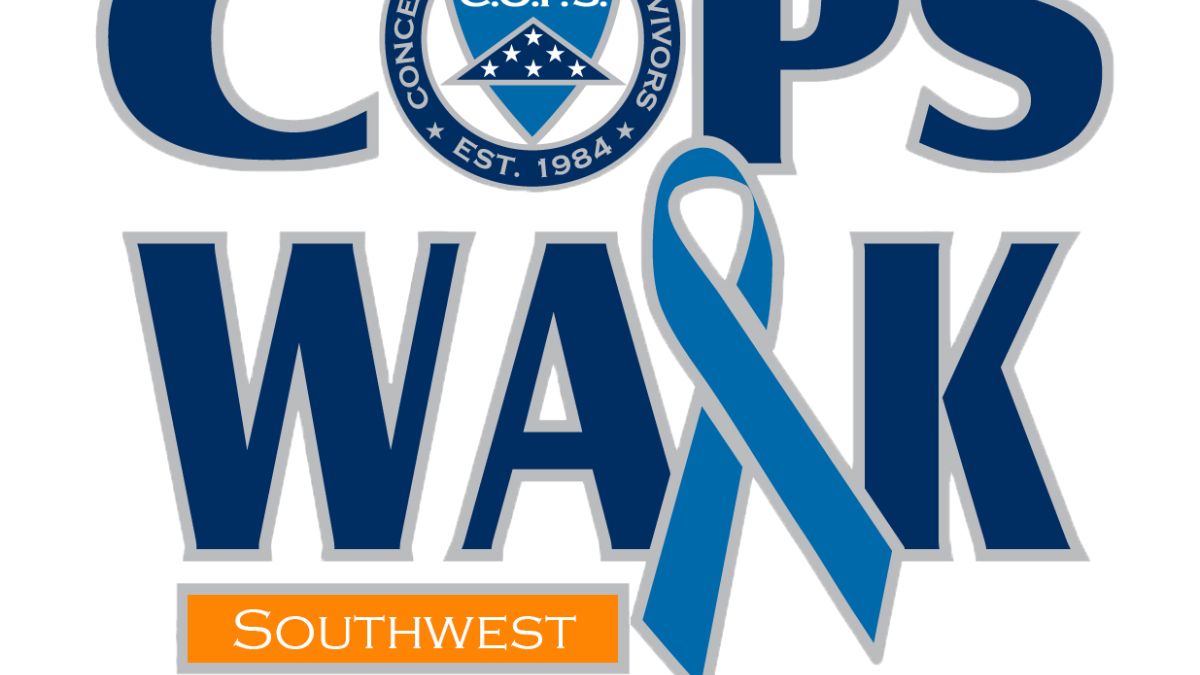News
what is clydes pension plan: A Comprehensive Guide

Are you curious about what is clydes pension plan? You’re not alone. As we navigate the complexities of retirement planning, understanding pension options can feel overwhelming. Whether you’re a seasoned employee or just starting your career at Clyde’s, knowing how this pension plan works is crucial for securing your financial future.
Clyde’s Pension Plan offers a structured way to prepare for retirement while providing peace of mind. With various types and benefits available, it’s essential to grasp what makes this plan unique and how it aligns with your long-term goals.
Join us as we unravel the details behind Clyde’s Pension Plan and equip you with everything you need to know for a confident retirement journey!
Explanation of a Pension Plan
A pension plan is a financial arrangement designed to provide individuals with income after retirement. It acts as a safety net, ensuring that people can maintain their standard of living when they no longer receive regular paychecks.
Typically funded by employer contributions, these plans can also require employee input. The funds grow over time through investments, which helps build a substantial nest egg for retirees.
There are various types of pension plans—defined benefit and defined contribution being the most common. In a defined benefit plan, employees receive predetermined payouts based on salary and tenure. Conversely, in defined contribution plans like 401(k)s, the payout depends on individual contributions and investment performance.
Understanding how these components work together is crucial for anyone considering joining such programs. They offer not just financial security but also peace of mind during one’s golden years.
You may like also:Unlocking Wealth: A Comprehensive Guide to Money6X Investment Trusts
Types of Pensions Available
When considering what is Clyde’s pension plan, it’s essential to understand the different types of pensions available.
Defined benefit plans guarantee a specific payout upon retirement, based on factors like salary and years of service. This option provides stability for retirees who seek predictable income.
On the other hand, defined contribution plans shift some responsibility onto employees. Participants contribute a portion of their earnings to an individual account, with employers sometimes matching contributions. The final payout depends on investment performance.
There are also hybrid plans that combine elements from both types. These can offer flexibility while still providing a guaranteed minimum benefit.
Government pensions may be available for public service employees. These often come with unique eligibility requirements and benefits tailored to those in governmental roles. Each type has its own features and advantages worth exploring further when choosing a pension plan that fits your needs.
Benefits of Clyde’s Pension Plan
Clyde’s Pension Plan offers a range of advantages for its members. One significant benefit is financial security in retirement. Participants can enjoy peace of mind knowing they have a steady income stream when they leave the workforce.
Another highlight is the potential for employer contributions. This means that not only do you contribute, but your employer adds to your pension, enhancing your future payouts significantly.
The plan also provides tax benefits. Contributions are often made pre-tax, allowing participants to reduce their taxable income while saving for retirement.
Additionally, Clyde’s Pension Plan includes options for survivor benefits. This feature ensures that loved ones remain financially supported even after one passes away.
Having access to professional management of funds helps individuals make informed decisions regarding investments without needing extensive financial expertise themselves.
How to Enroll in Clyde’s Pension Plan
Enrolling in Clyde’s Pension Plan is a straightforward process designed for your convenience. Start by checking if you meet the eligibility criteria, which typically includes being a full-time employee.
Once you’ve confirmed your eligibility, gather necessary documents such as identification and employment details. This will simplify the enrollment process.
Visit the official Clyde’s portal or contact HR for access to the enrollment form. Completing it requires basic personal information and may involve selecting contribution options tailored to your needs.
After submitting your application, keep an eye out for confirmation via email or postal mail. Don’t hesitate to reach out with any questions during this time; clarity can enhance your participation experience significantly.
Remember that understanding plan specifics can optimize benefits down the line. Take advantage of resources available through Clyde’s for any additional guidance needed along the way.
Common Misconceptions About Pensions
Many people hold misconceptions about pensions that can lead to confusion and missed opportunities. One common belief is that all pensions are the same. In reality, pension plans vary widely in structure and benefits.
Another misunderstanding revolves around eligibility. Some assume they need a high-paying job to qualify for a pension plan. However, many employers offer these plans across various salary ranges, making them accessible to more employees than expected.
Additionally, there’s a notion that once you retire, your pension will be fixed indefinitely with no adjustments. While some plans do provide steady income, others may include cost-of-living adjustments based on inflation or company performance.
Many think pensions are only for public sector workers. This isn’t true; numerous private companies also provide robust pension options as part of their employee benefits package. Understanding these nuances can empower individuals when planning their financial future.
Alternatives to Traditional Pensions
As more people seek flexibility in their retirement savings, alternatives to traditional pensions have gained popularity. One option is the 401(k) plan. This employer-sponsored account allows employees to save pre-tax dollars for retirement, often with matching contributions from employers.
Another alternative is an Individual Retirement Account (IRA). IRAs offer tax advantages and can be managed independently. There are both Traditional and Roth IRAs, giving individuals choices based on their financial situations.
For those looking for investment opportunities beyond standard accounts, real estate investing has emerged as a viable path. Owning rental properties or participating in Real Estate Investment Trusts (REITs) can provide passive income streams.
Additionally, annuities serve as another option by providing guaranteed income during retirement. They come in various forms but typically require upfront capital that grows over time, offering security against market fluctuations.
Conclusion:
Clyde’s Pension Plan stands out as a reliable option for individuals planning their financial future. Its structure provides not only security but also peace of mind.
Understanding the nuances of such plans can be daunting, yet it’s essential for making informed decisions. Many find that knowledge empowers them to navigate retirement options effectively.
Exploring benefits and enrollment processes reveals the plan’s accessibility. It encourages proactive engagement in securing one’s financial well-being.
As people weigh their choices, they often discover alternatives that fit different lifestyles and needs. This flexibility is crucial in today’s ever-changing economic landscape.
Pensions may seem traditional, yet they offer foundational support during retirement years. Each individual’s journey with Clyde’s Pension Plan can be uniquely fulfilling and tailored to personal circumstances.
FAQ’s:
What is Clyde’s Pension Plan designed for?
Clyde’s Pension Plan is aimed at offering employees stable income after retiring from their jobs with the company.
Who qualifies for participation in the plan?
Eligibility typically extends to full-time employees who meet certain criteria set forth by HR upon joining the organization.
Can I change my contribution rate?
Yes! Employees usually have some flexibility regarding how much they choose to contribute each pay period within guidelines.
News
Unlocking the Secrets of lwedninja: Your Ultimate Guide

The digital landscape is brimming with unique applications and platforms that promise to simplify our lives and enhance productivity. Among these innovations, lwedninja is quickly gaining recognition for its cutting-edge features and versatility. But what exactly is lwedninja? How can it transform your daily routine, help streamline your work processes, and add value to your projects?
If you’re new to lwedninja or simply curious about its potential, this guide is your complete resource to uncovering its secrets. From understanding its functionalities to discovering how it can revolutionize your workflow, we’ll explore.
What is lwedninja?
At its core, lwedninja is an advanced software platform designed to enhance productivity, creativity, and efficiency across various industries. Built with innovation and adaptability in mind, it offers intuitive tools and features that cater to users of all skill levels, from novices to seasoned professionals.
Whether you’re managing a small business, working on a creative project, or supervising complex workflows, lwedninja positions itself as the go-to solution streamlined to meet diverse user needs. The platform combines expert-level functionality with a user-friendly interface, making it accessible yet powerful for tackling any challenge.
Key Features of lwedninja
lwedninja’s feature suite ensures that it stands out as a superior digital solution. Some of its hallmark features include:
- Adaptive Interfaces: A streamlined interface tailored to enhance ease of use.
- Automation Tools: Simplify repetitive tasks with AI-driven automation capabilities.
- Robust Analytics: Gain actionable insights through detailed reports and data visualization tools.
- Cross-Functional Integration: Connect seamlessly with other platforms and tools without any friction.
- Customizable Features: Adapt the platform to suit specific business or personal requirements.
The combination of these features enables users to accomplish more in less time while maintaining high-quality results.
Why lwedninja is a Game-Changer
With countless platforms saturating the market, why should lwedninja be your first choice? It all boils down to three distinct advantages that help users thrive in their professional and personal projects.
- Enhanced Efficiency
lwedninja is purpose-built to save you time. From automated workflows to predictive analytics, every tool is crafted to reduce redundant processes. For example, its automation tools can eliminate repetitive administrative tasks, allowing teams to focus on more creative and high-impact projects.
- Actionable Analytics
Understanding your data is half the battle in today’s data-driven world. With lwedninja’s analytics capabilities, users can look beyond the numbers to extract meaningful insights. Whether you’re tracking productivity, evaluating market performance, or projecting trends, its robust analytics allow for smarter, data-backed decision-making.
- Customizable Functionality
Every user has unique needs, and an off-the-shelf solution simply doesn’t cut it. With lwedninja’s customizable tools, users can modify dashboards, prioritize specific data sets, and even program automated workflows tailored to their requirements.
Origins and Vision Behind lwedninja
The story of lwedninja begins with a simple yet bold vision—to redefine how people interact with technology to achieve their goals. Unlike many platforms that merely enhance specific tasks, lwedninja was conceived to provide an integrated ecosystem that empowers users to thrive creatively and strategically.
With innovation at its center, its creators envisioned a tool that evolves alongside technological advancements, ensuring users worldwide can stay ahead of the curve.
Commitment to Continuous Improvement
A standout element of lwedninja is its commitment to continuous improvement. Frequent updates ensure a seamless experience, introducing advanced features while maintaining reliability. This dedication reflects its proactive approach to meeting the changing needs of the modern user.
How to Harness lwedninja to Its Full Potential
Getting started with lwedninja is straightforward, but unlocking its full capabilities requires an informed approach. Here’s a step-by-step guide to mastering this game-changing platform.
Step 1. Set Clear Goals
Before getting started, define your objectives. What problems do you want to solve with lwedninja? Whether it’s automating processes, analyzing data, or creating customized workflows, identifying your purpose lays the foundation for success.
Step 2. Leverage Tutorials and Training
Don’t miss out on lwedninja’s extensive tutorials and training resources. From demo videos to live webinars, these tools demystify even the platform’s most advanced features, empowering you to maximize its functionality.
Step 3. Test Integrations
Seamlessly integrate lwedninja with your current tools and software. Sync your calendar, spreadsheet applications, or customer relationship management (CRM) platforms to ensure a cohesive and connected digital workspace.
Step 4. Experiment with Automation
Automating your most repetitive tasks is one of lwedninja’s strongest value propositions. Whether you’re automating data entry or generating automatic email reports, take full advantage of this feature to free up time for more strategic objectives.
Step 5. Collaborate Through the Platform
lwedninja encourages collaboration between team members. Use its shared dashboards and collaborative tools to keep your team aligned and focused on achieving their goals.
Real-Life Applications of lwedninja
Curious about how lwedninja functions in real-world scenarios? Here are two examples.
- Marketing Teams
lwedninja is a game-changer for marketing teams looking to create impactful campaigns. With tools for in-depth analytics, predictive modeling, and content scheduling, marketers can produce high-ROI strategies tailored to their audiences.
- Project Managers
For project management professionals tasked with supervising complex workflows, lwedninja ensures no component is overlooked. Its Gantt charts, progress reports, and task prioritization tools streamline even the most complicated of projects.
Unlock the Full Potential of lwedninjaToday
The successes of users highlight a powerful truth—it’s more than just a software platform. It’s a partner in achieving your goals, streamlining workflows, and unlocking your true potential. By bringing cutting-edge tools directly to your fingertips, lwedninja empowers individuals and organizations to work smarter, not harder.
Whether you’re a business manager, marketer, or creative professional, lwedninja’s unmatched capabilities are here to elevate the way you work. Stop relying on outdated tools and start relying on intelligent innovation with lwedninja.
Conclusion
Achieving success in today’s fast-paced environment requires more than dedication; it demands the right tools to drive efficiency and innovation. lwedninja stands at the intersection of capability and accessibility, offering a platform that transforms the way you perform and deliver results. Don’t settle for mediocrity when you can harness the power of a solution built to maximize your potential. The future of productivity starts here—join the lwedninja community today and redefine what’s possible.
FAQ’s
What is lwedninja?
lwedninja is an innovative productivity platform designed to help individuals and teams optimize performance, streamline workflows, and achieve better results through intelligent tools and features.
Who can benefit from using lwedninja?
lwedninja is versatile and adaptable, making it ideal for professionals, small businesses, and enterprises across various industries who want to enhance efficiency and boost productivity.
How does lwedninja improve productivity?
By combining cutting-edge technology with user-friendly design simplifies complex tasks, automates repetitive processes, and enables smarter decision-making, saving time and resources.
News
Exploring Mangareader: Your Ultimate Guide to Reading Manga Online

Are you a manga enthusiast searching for the best way to indulge in your favorite stories? Look no further than Mangareader, a treasure trove of captivating tales and stunning artwork. This platform has become a go-to destination for readers who crave instant access to countless titles from various genres. Whether you’re into action-packed adventures, heartwarming romances, or spine-chilling thrillers, Mangareader has something for everyone.
With an endless library at your fingertips, reading manga online just got easier and more enjoyable. Join us as we explore all that Mangareader has to offer—from its user-friendly interface to popular titles worth checking out. Get ready to dive deep into the world of manga with this ultimate guide!
Advantages of Reading Manga Online
Reading manga online offers remarkable convenience for fans everywhere. You can access a vast library of titles from the comfort of your home or on the go, all through your device.
No need to hunt down physical copies at stores. With just a few clicks, you can dive into countless stories and genres.
Digital platforms often provide regular updates when new chapters are released. This keeps you engaged with ongoing series without missing a beat.
Online reading also allows for easy bookmarking and organization of your favorite titles. You can track where you left off effortlessly.
Another advantage is the ability to discover niche and indie works that may not be available in print form. Online platforms expand your horizons beyond mainstream selections, offering unique narratives and artistic styles that cater to diverse tastes.
Navigation and User Interface
Navigating Mangareader is a breeze, thanks to its intuitive design. The layout is clean and user-friendly, allowing readers to find their favorite titles effortlessly.
At the top, you’ll see search bars and categories that guide you through various genres. Whether you’re in the mood for romance or adventure, everything is just a click away.
The artwork showcased on the homepage draws you in immediately. Thumbnails are well-organized, making it simple to spot trending mangas or newly released chapters.
Scrolling down reveals personalized recommendations based on your reading history. This feature helps you discover hidden gems tailored to your taste.
Additionally, each manga page provides options for different viewing modes—ideal for those who prefer zooming into intricate details or wish for a distraction-free experience. You’ll appreciate how quickly you can switch between chapters without losing your place too!
Popular Manga Titles on Mangareader
Mangareader boasts a diverse library filled with captivating titles that cater to all tastes. Whether you’re into shonen, shojo, or seinen genres, there’s something for everyone.
Hit series like “My Hero Academia” and “Attack on Titan” draw readers into thrilling worlds where heroes battle against overwhelming odds. For those who prefer heartwarming tales, “Your Lie in April” offers an emotional journey through music and love.
Fans of fantasy will revel in the enchanting realms of “One Piece,” while slice-of-life lovers can enjoy the relatable stories found in “March Comes in Like a Lion.” Mystery enthusiasts might find themselves engrossed by titles such as “Death Note,” which blends suspense with intellect.
Each manga title comes packed with unique characters and intricate plots. This variety ensures every visit to Mangareader is fresh and exciting, encouraging readers to explore new adventures regularly.
How to Create an Account on Mangareader
Creating an account on Mangareader is a straightforward process that enhances your reading experience. Start by visiting the official website.
Look for the “Sign Up” button, usually located at the top right corner of the homepage. Click it to begin. You’ll be prompted to enter some basic information like your email address and a secure password.
After filling in these details, make sure to check any terms and conditions if required. It’s essential not to skip this step as it ensures you understand what you’re signing up for.
Once submitted, you’ll receive a confirmation email. Open it and click on the verification link provided. This will activate your account.
With everything set up, you can now dive into your favorite manga series while enjoying personalized features tailored just for you!
Features for Customization and Organization
Mangareader offers a range of features that allow users to tailor their reading experience. One standout option is the ability to create personalized lists. Users can categorize manga by favorites, currently reading, or want-to-read.
Customization extends beyond just lists. You can adjust display settings according to your preferences. Whether you prefer light mode for daytime reading or dark mode for late-night sessions, Mangareader has you covered.
Bookmarking chapters is another helpful feature. It ensures you never lose your place in an ongoing saga. With easy navigation through saved bookmarks, finding where you left off becomes a breeze.
Moreover, the search function helps locate specific titles quickly. Filters let readers narrow down choices based on genre or status—be it ongoing or completed series—making it easy to discover new stories tailored to individual tastes.
Community Interaction and Reviews
Mangareader thrives on community interaction, making it more than just a reading platform. Readers can dive into discussions about their favorite series, share insights, and even speculate on upcoming plot twists.
Users have the option to leave reviews for titles they’ve read. This creates a vibrant ecosystem where opinions flow freely. The variety of perspectives enhances the overall experience for everyone involved.
Engagement doesn’t stop at reviews. Mangareader often hosts polls and events that encourage users to participate actively. Fans can vote on which manga should get featured or suggest themes for future discussions.
This sense of belonging fosters connections among readers who share similar interests. You might find someone with an identical taste in genres or hidden gems you haven’t discovered yet!
Alternatives to Mangareader
If you’re exploring alternatives to Mangareader, you have some great options. Websites like MangaFox offer a similar reading experience with a vast collection of titles.
Another popular choice is Viz Media. This platform provides official access to many well-known series, ensuring quality and legality in your manga consumption.
Crunchyroll also features manga alongside its anime offerings. Subscribers can enjoy both formats seamlessly in one place.
For those who prefer mobile apps, Manga Plus by Shueisha delivers up-to-date chapters directly from Japan. It’s perfect for staying current with trending titles.
Webtoon specializes in webcomics but includes various genres that might pique your interest if you’re open to exploring beyond traditional manga-style narratives. Each alternative has unique features worth checking out!
Conclusion
Reading manga online has never been easier or more enjoyable. Mangareader stands out as a reliable source for manga enthusiasts.
With its vast selection and user-friendly interface, you’re bound to find something that piques your interest. Whether you’re a longtime fan or just starting, there’s plenty to explore.
Engaging with the community enhances the experience further. Sharing thoughts and recommendations makes reading even more rewarding.
As technology evolves, so does the way we consume content. Platforms like Mangareader play a crucial role in bringing stories to life at our fingertips.
For those who seek variety, alternatives exist but don’t always measure up. The sense of belonging within this platform is truly unmatched.
News
Walking Toward Change: What Cops Walk 2025 Means for Our Streets

In a world where the relationship between law enforcement and communities is under constant scrutiny, innovative initiatives are emerging to bridge the gap. One such initiative set for 2025 is Cops Walk 2025. This program aims to transform how police officers engage with their neighborhoods, fostering trust and cooperation. As we delve into what this movement entails, it’s essential to understand its roots in community policing and the challenges that have shaped it over time. Prepare to explore a new approach to public safety—one that walks hand-in-hand with communities rather than standing apart from them. Join us as we uncover how Cops Walk 2025 could redefine our streets for years to come.
The History of Community Policing and its Challenges
Community policing emerged in the 1970s as a response to rising crime rates and public distrust of law enforcement. It aimed to bridge the gap between police officers and citizens, emphasizing collaboration, prevention, and problem-solving.
However, implementing this approach has not been without challenges. Many officers struggled with shifting from traditional tactics focused on enforcement to building relationships within communities. This transition often faced resistance both internally—from fellow officers—and externally—from community members who were skeptical of change.
Moreover, resources are frequently stretched thin. Departments may lack funding or personnel for effective outreach programs. As a result, even well-intentioned initiatives sometimes fall short or produce inconsistent results.
The historical context highlights an ongoing struggle: balancing authority with accountability while fostering trust among diverse populations in various neighborhoods across the country.
What is Cops Walk 2025?
Cops Walk 2025 is an innovative initiative aimed at transforming police-community relations. It emphasizes proactive engagement between law enforcement officers and the communities they serve.
The program encourages officers to step out of their patrol cars and onto the sidewalks. This simple act fosters face-to-face interactions, allowing for a deeper understanding of community concerns.
Through regular walking events, participating officers create opportunities for dialogue. Residents can share their experiences and perspectives in a relaxed setting.
Cops Walk 2025 also serves as a platform for transparency. As officers become more visible in neighborhoods, trust begins to build over time. The initiative seeks to bridge gaps that have historically led to tensions between citizens and police forces.
This grassroots approach not only humanizes law enforcement but also empowers communities to take an active role in shaping public safety strategies.
The Objectives and Goals of Cops Walk 2025
Cops Walk 2025 aims to bridge the gap between law enforcement and community members. It seeks to foster trust, understanding, and collaboration on a grassroots level.
One primary objective is enhancing transparency in policing practices. By encouraging officers to engage directly with residents, this initiative hopes to demystify police work.
Another goal is to tackle crime prevention through community involvement. Residents can play an active role in identifying issues that affect their neighborhoods.
Additionally, Cops Walk 2025 emphasizes mental health awareness among both officers and citizens. Providing resources and support will create a healthier environment for everyone involved.
The program strives for improved training focused on de-escalation techniques. This approach promotes peaceful conflict resolution before situations escalate into violence or misunderstanding.
How Cops Walk 2025 Will Impact Our Streets
Cops Walk 2025 aims to transform the relationship between law enforcement and communities. By fostering direct interactions, officers can build trust with residents.
This initiative encourages police visibility on foot. Increased patrols in neighborhoods allow officers to engage locals personally. Such connections may lead to better communication about community concerns.
As cops become familiar faces rather than distant figures, crime rates could decline. Residents will feel more secure knowing they can approach their local officers easily.
Moreover, Cops Walk 2025 promotes a proactive approach to policing. Officers can identify issues early before they escalate into serious problems. This strategy not only strengthens relationships but also enhances public safety.
The streets are set for change as police begin walking among us daily. With this shift, we might witness a transformation in how communities perceive law enforcement and vice versa.
Potential Benefits and Criticisms of Cops Walk 2025
Cops Walk 2025 promises several potential benefits. One key advantage is enhanced community engagement. Officers walking the beat can foster relationships with residents, breaking down barriers that often exist between law enforcement and citizens.
Increased visibility may lead to a reduction in crime rates. When officers are present on the streets, it creates a sense of safety among communities. This proactive approach could deter criminal activities before they even begin.
However, not everyone is convinced about its effectiveness. Critics argue that this initiative might be superficial and fail to address deeper systemic issues within policing practices. They question whether simply changing patrol methods will have a meaningful impact on public trust.
Moreover, there are concerns regarding resource allocation. Some believe funds for Cops Walk 2025 would be better spent on training or mental health resources for both officers and citizens alike. The debate continues as stakeholders weigh these pros and cons carefully.
Conclusion
Cops Walk 2025 represents a pivotal moment in community engagement. By bridging the gap between law enforcement and citizens, it fosters trust.
This initiative encourages officers to step into neighborhoods not just as enforcers but as members of the community. It’s about building relationships grounded in understanding and respect.
As this movement unfolds, its potential to reshape perceptions of policing is significant. Communities may find themselves more involved in public safety dialogue than ever before.
However, like any bold endeavor, it invites scrutiny and debate. Discussions around effectiveness will undoubtedly arise, prompting essential conversations about accountability within police departments.
The future holds promise with Cops Walk 2025 at the forefront of modern policing strategies. Its impact could resonate for years to come as communities work hand-in-hand with their local officers toward a shared vision of safety and cooperation.
FAQ’s
What exactly does Cops Walk 2025 entail?
This initiative focuses on officers engaging directly with residents in their neighborhoods. The aim is to foster trust and collaboration.
How will this impact crime rates?
Advocates believe that increased visibility and engagement can lead to a decline in crime as relationships between police and communities grow stronger.
What are the potential challenges ahead?
Some skeptics worry about the effectiveness of such initiatives without proper training for officers or meaningful community involvement. Concerns also exist regarding funding and resource allocation.
Will Cops Walk 2025 affect police budgets?
Changes might be necessary, particularly if additional personnel or resources are required for implementation.
Is public opinion supportive of this initiative?
While many citizens see the value in fostering better relations with law enforcement, others remain cautious based on past experiences with policing practices.
-

 Entertainment12 months ago
Entertainment12 months agoUnveiling the World of HDToday
-

 Entertainment12 months ago
Entertainment12 months agoWWE Raw S31E19: A Rollercoaster of Emotions
-

 Topic12 months ago
Topic12 months agoHüriyer: Unveiling the Essence of Human Freedom
-

 Health12 months ago
Health12 months agoExploring the Benefits of wellhealthorganic Home Remedies
-

 Business12 months ago
Business12 months agoUnlocking Opportunities with GovDeals – Liquidity Services Marketplace
-

 Technology12 months ago
Technology12 months agoUnlocking the Mystery of QXEFV
-

 Health12 months ago
Health12 months agoIlluminate Your Scans: Unveiling the Magic of Luminous Scans in Modern Imaging
-

 Health7 months ago
Health7 months agoCape Concierge Physical Therapy: Revolutionizing Physical Therapy in Sandwich, MA
